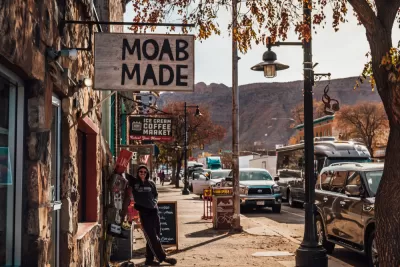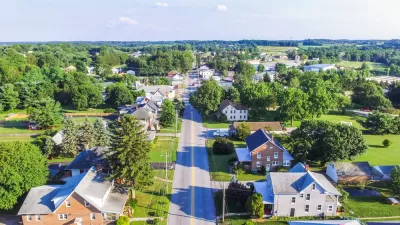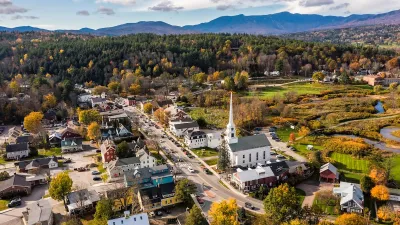A research and capacity building initiative based at Utah State University seeks to help fast-growing tourist meccas in the West plan for smart growth.

Writing in High Country News, Heather Hansman describes an initiative known as GNAR—Gateway and Natural Resource Amenities—that seeks to help small communities experiencing heavy tourism and migration manage growth effectively. The initiative was started by Danya Rumore, a professor of planning at the University of Utah.
“Communities started to come on board, and in January of 2020, the GNAR Initiative became a part of the Institute of Outdoor Recreation and Tourism at Utah State University. Rumore worked with academics there to create a cross-discipline, geographically broad forum to seed research, share best practices, and brainstorm ways to change practices in Western states, where state-level policy has often meant regressive planning and growth policies, including exclusionary zoning,” Hansman writes.
“Recreation towns aren’t the only places that have been hammered by changing demographics and shifting economic tides during the past two years, but Rumore says many of them were already struggling with how to plan for growth, house their workers and manage the uneven economic progress.” The sudden influx of new residents brought on by the COVID-19 pandemic blindsided many of them, accelerating their issues. “The towns might have relatively few residents, but their many visitors make use of the town’s resources, overwhelming the infrastructure without necessarily adding to the tax base. They tend to be liberal enclaves in conservative states where planning isn’t funded, even though growth is accelerating.”
Hansman provides some examples: “Businesses in Sandpoint closed because their workers couldn’t find housing. Moab’s water system approached its limit. Along Springdale’s former commercial strip, which has largely been converted to vacation rentals, Zion traffic was backed up for hours, making it hard for locals to get to work.”
The GNAR initiative has two main components: research and capacity building and education. “There is no silver bullet. No town is going to perfectly balance growth with identity, and no policy will make everyone happy, especially as new crowds and new incomes streams move in. But Rumore sees the GNAR communities as canaries in the coal mine of wealth inequality, and she believes that it’s crucial to give them tools to proactively plan for the kind of growth they want, so they aren’t overwhelmed by rapid change.”
FULL STORY: How growing Western rec towns might hold onto their futures

Study: Maui’s Plan to Convert Vacation Rentals to Long-Term Housing Could Cause Nearly $1 Billion Economic Loss
The plan would reduce visitor accommodation by 25,% resulting in 1,900 jobs lost.

North Texas Transit Leaders Tout Benefits of TOD for Growing Region
At a summit focused on transit-oriented development, policymakers discussed how North Texas’ expanded light rail system can serve as a tool for economic growth.

Why Should We Subsidize Public Transportation?
Many public transit agencies face financial stress due to rising costs, declining fare revenue, and declining subsidies. Transit advocates must provide a strong business case for increasing public transit funding.

How to Make US Trains Faster
Changes to boarding platforms and a switch to electric trains could improve U.S. passenger rail service without the added cost of high-speed rail.

Columbia’s Revitalized ‘Loop’ Is a Hub for Local Entrepreneurs
A focus on small businesses is helping a commercial corridor in Columbia, Missouri thrive.

Invasive Insect Threatens Minnesota’s Ash Forests
The Emerald Ash Borer is a rapidly spreading invasive pest threatening Minnesota’s ash trees, and homeowners are encouraged to plant diverse replacement species, avoid moving ash firewood, and monitor for signs of infestation.
Urban Design for Planners 1: Software Tools
This six-course series explores essential urban design concepts using open source software and equips planners with the tools they need to participate fully in the urban design process.
Planning for Universal Design
Learn the tools for implementing Universal Design in planning regulations.
Ascent Environmental
Borough of Carlisle
Institute for Housing and Urban Development Studies (IHS)
City of Grandview
Harvard GSD Executive Education
Toledo-Lucas County Plan Commissions
Salt Lake City
NYU Wagner Graduate School of Public Service





























